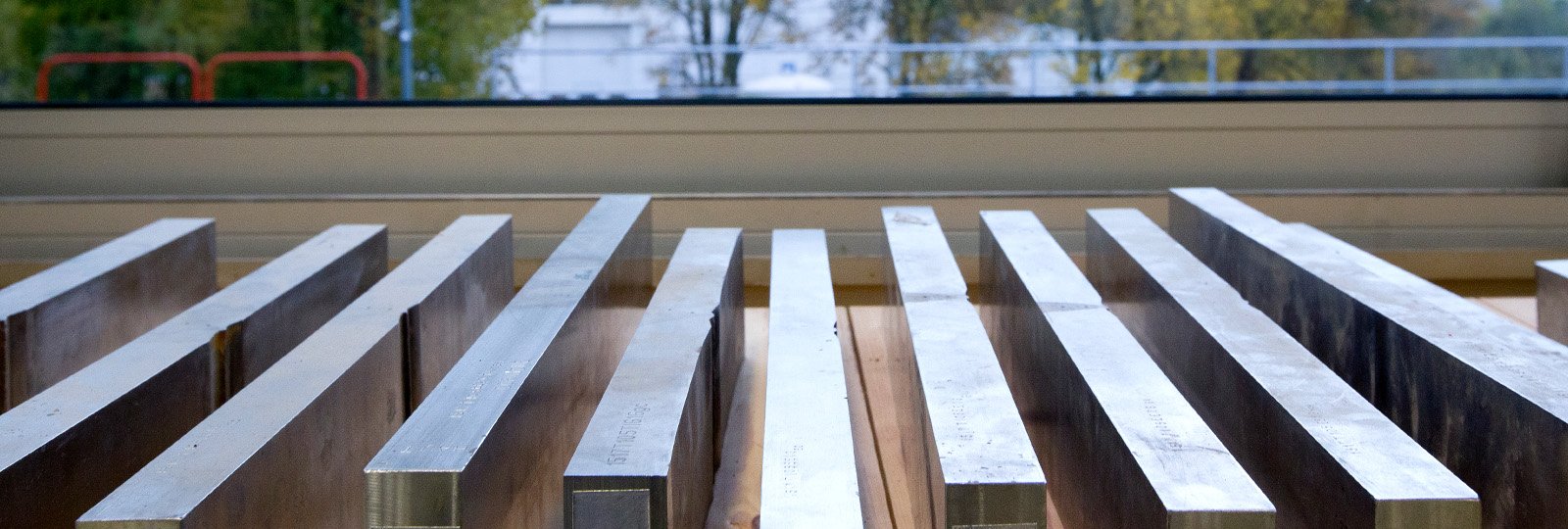
ADVISE brings together a multidisciplinary team with complementary expertise of leading experts and key stakeholders covering construction, operation, and all aspects of in-service inspection. The ADVISE consortium is made of 13 organisations from 6 European countries which include United Kingdom, France, Germany, Lithuania, Czech Republic and Hungary.
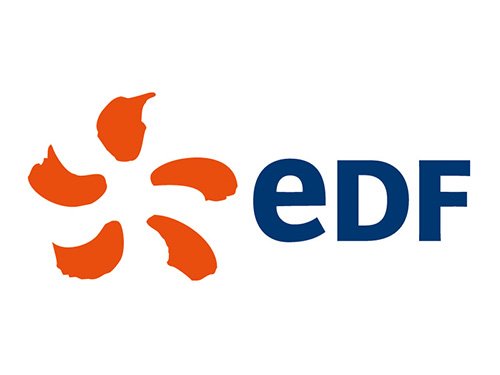
Électricité de France
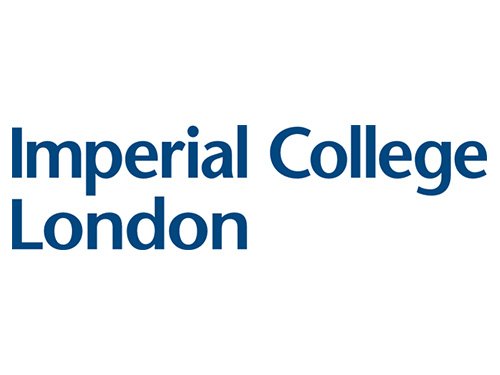
Imperial College London
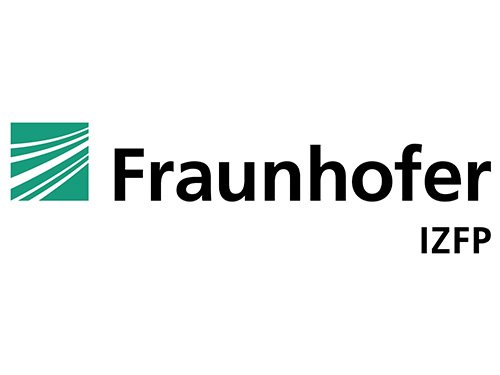
Fraunhofer IZFP
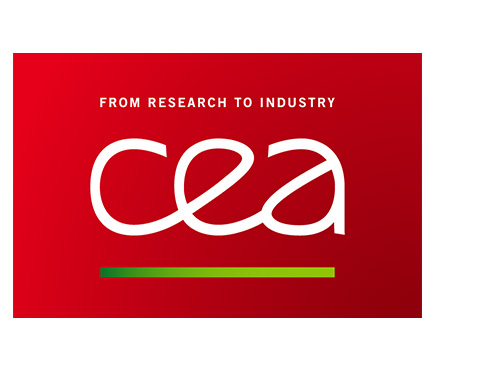
CEA
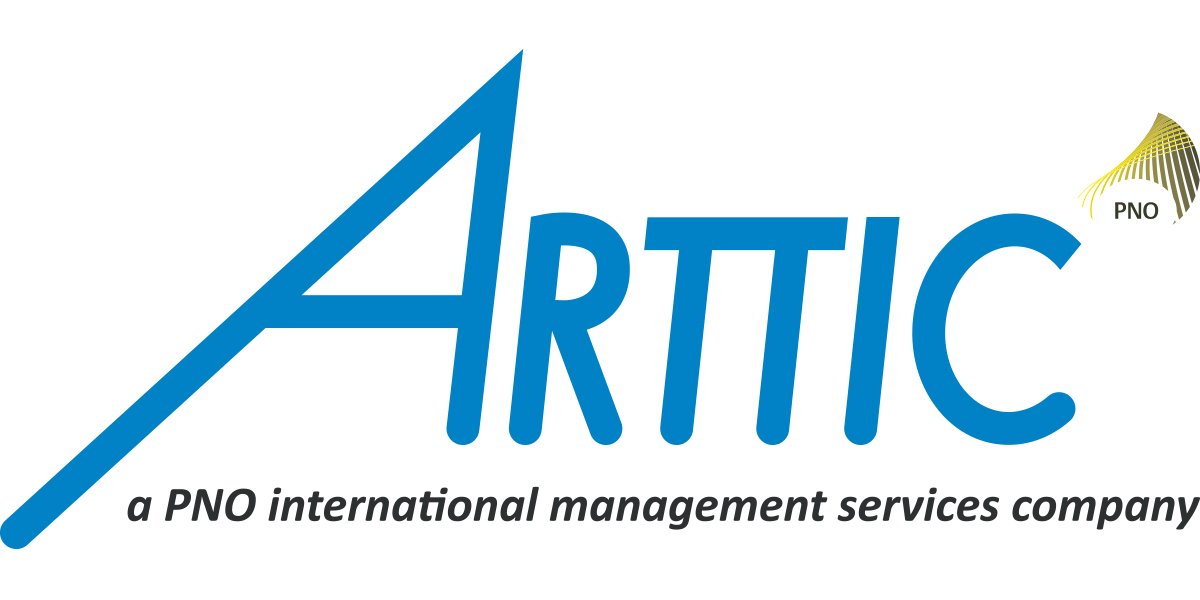
ARTTIC
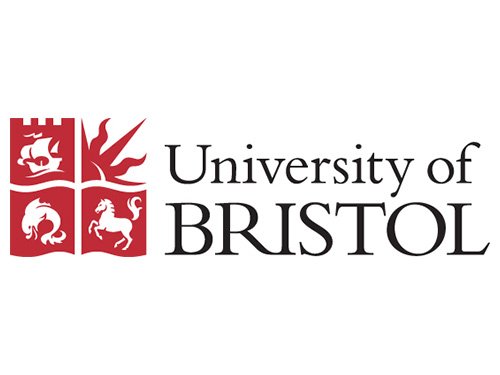
University of Bristol
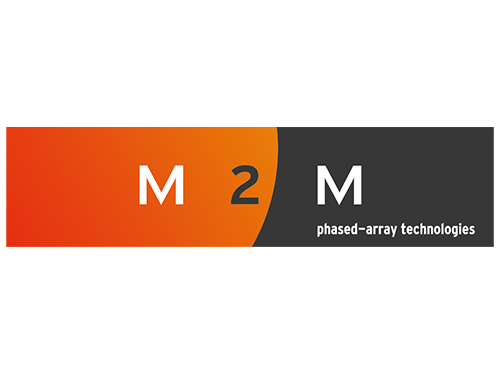
M2M
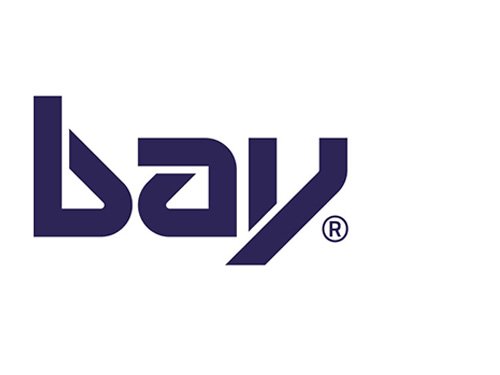
Bay Zoltán
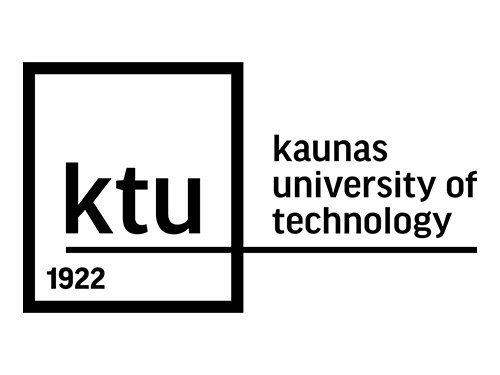
Kaunas University of Technology
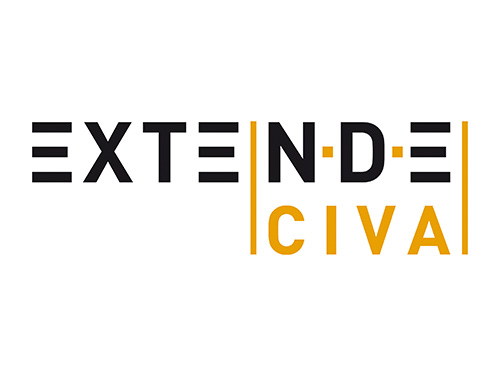
EXTENDE
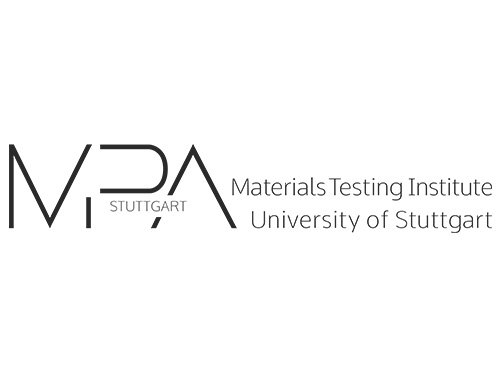
University of Stuttgart
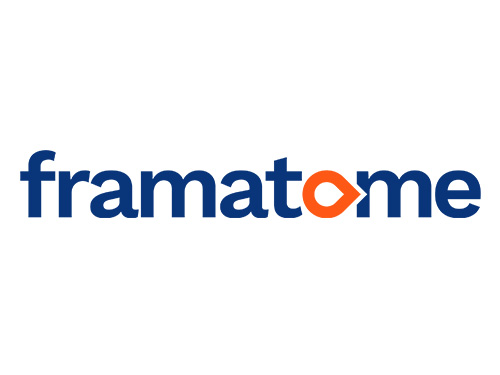
Intercontrôle
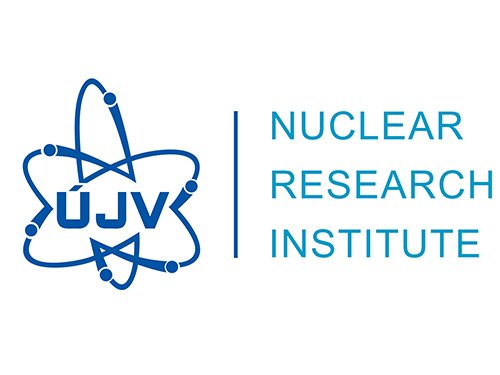
ÚJV Rež
Electricité de France (EDF) was set up in 1946 out of the desire to have a national electrical utility that could help rebuild the country after the Second World War. Since its creation, the company has had the responsibility for generating, transmitting, and distributing electricity in France. EDF remains one of the European utilities with a significant R&D activity and effort on innovation. Around 2500 people are presently employed at EDF R&D, amongst which, 70% are researchers and executives, 32% women (in majority researchers and executives).
The staff involved in ADVISE belongs to EDF R&D’s Material and Mechanics of Components Department (MMC). MMC’s task is to carry out the investigations required to meet the safety, reliability and productivity requirements of industrial installations, in the fields of materials and thermomechanics. Its activity covers all energy production means (nuclear power plants, coal-fired power stations, combustion turbines, dams,…), the management of nuclear waste (storage, disposal, transmutation), and the support to the business services of the EDF group. 90% of the activity of the department is oriented towards the nuclear field.
MMC is the combination of skills in the fields of metallurgy, corrosion, chemistry, mechanics and non-destructive evaluation. Its experts form a high level multidisciplinary team in the field of the behaviour and development of materials, as well as in the fields of mechanics and technology of some components.
Role in ADVISE
In ADVISE, EDF is both project coordinator and contributor. As coordinator, EDF brings in a global vision on the industrial problem at hand, as well as experience on the approaches pursued in the different work-packages in this multi-disciplinary project, covering materials science, ultrasonic NDE and signal processing. Moreover, EDF has a proven track record in conducting national and international collaborative projects.
As a project contributor, EDF has a leading role in the definition of the industrial use-cases and has strong contributions in the fields of finite element modelling, multiple scattering filtering, and integration and application. Via the materials aging institute MAI, EDF also provides a strong vector of dissemination with high visibility.
Andreas SCHUMM, Project Manager and Project Coordinator
Andreas Schumm holds an EE diploma at the University of Berlin, and a Ph.D. in EE on the subject of ultrasonic wave propagation modelling. He was a research engineer at BAM Berlin in the NDT department, and represented BAM in the European project TRAPPIST. He joined EDF in 1995 and worked as research engineer in the fields on non-destructive testing, radiation shielding, and nuclear safety. He became project manager in 2009, and leads EDF’s R&D activity on severe accidents and Non-Destructive Evaluation (NDE), participating in several FP7 projects. He is a lecturer at Paris VII university, appointed member of the French commission for inspection procedure qualification, and represents EDF in the VGB (Verband der Grosskraftwerkbetreiber) working group on NDT.
Pierre-Emile LHUILLIER, Research Engineer
Pierre-Emile Lhuillier graduated from the Ecole des Mines at Nancy and holds a MSc in Plasma Physics in relation with Nuclear Fusion and a Ph.D. in material science on the topic of irradiation-induced degradation of materials. He is a research engineer in ultrasonic Non-Destructive Examination, with expertise in numerical modelling of ultrasound propagation. He is the head of the NDT lab at EDF’s largest R&D site in Moret sur Loing, and a supervisor of a PhD thesis on grain scale modelling.
Imperial College London is a science-based university with an international reputation for excellence in teaching and research. Located in the heart of London, Imperial is a multidisciplinary space for education, research, translation and commercialisation, harnessing science and innovation to tackle global challenges. The research will be conducted in the Non-Destructive Evaluation (NDE) research group, which is within the Department of Mechanical Engineering of the Faculty of Engineering of Imperial College London.
The expertise of the NDE group at Imperial College is in researching and developing techniques for Non- Destructive Evaluation. It has a strong focus and long record of developing solutions to industrial problems by the application of sound scientific and engineering principles. It is managed in close collaboration by 4 permanent staff (Prof Lowe is one of these), and has more than 20 post-docs, PhD students and Engineering Doctorate researchers. It was a founder and is a lead partner of the UK Research Centre in Non-Destructive Evaluation (RCNDE), which has 6 university members, 15 major industrial company members, and more than 30 associate members. The RCNDE was formed in 2003, has been funded continuously since then, and has committed funding until 2020.
Technology developed in the NDE group is now being exploited by three spin-out companies, through two other licence agreements, two licensed software products, and through frequent consultancy arrangements.
Role in ADVISE
The NDE group at ICL has general expertise in most methods of NDE, and specialist expertise in ultrasonic methods.
It has conducted many research projects that provide technical expertise to contribute to this project (some listed later). The topic that has been identified for ICL's particular focus in the project, for which ICL will be WP leader, is the characterisation of granular materials. The aim will be to perform the characterisation by interpreting ultrasound signals that have propagated through, or scattered back from, samples and components. The achievement of this aim will require research devoted to both experimental and numerical simulation studies. ICL also has experience in numerical simulation of wave propagation (in WP1), advanced inspection methods (WP3) and defect evaluation (WP4).
Michael LOWE, Professor
Professor Lowe holds a BSc degree in Civil Engineering (University of Edinburgh) and MSc and PhD degrees in Mechanical Engineering (Imperial College London). He worked for the leading engineering consultants WS Atkins Ltd from 1979 to 1989, specialising in the application and development of numerical methods for the solution of problems in solid mechanics. His principal clients were in the nuclear power and offshore oil industries. Since 1989 he has worked in the Department of Mechanical Engineering at Imperial College London, where his appointment is Professor of Mechanical Engineering. His research expertise is in the use of ultrasound for Non-Destructive Evaluation (NDE), with specialist interests in guided waves, the interaction of waves with defects and structural features, and numerical modelling. He has published over 250 journal and conference papers relating to ultrasound, guided waves, numerical modelling and NDE. He was awarded the Roy Sharpe prize by the British Institute of NDT in 2011 for contributions to R&D in NDE, and the Roentgen prize by the International Committee for NDT in 2012 for contribution to the science and technology of NDT. He was elected Fellow of the Royal Academy of Engineering in 2014.
Peter HUTHWAITE, Lecturer
Dr Peter Huthwaite was appointed as a lecturer in the Mechanical Engineering department at Imperial in 2016, having completed his MEng and PhD degrees there in 2008 and 2012 respectively. He leads imaging research within the Non-Destructive Testing group, and has undertaken extensive work on improving imaging algorithms, particularly for guided wave tomography. Dr Huthwaite has extensive knowledge of numerical modelling tools, having written Pogo, a graphics card-based finite element ultrasound simulation package. He has interests in inversion techniques, as well as image processing and computer vision. Within ultrasound, he has extensive experience with guided waves, and he has also undertaken work on radiography for NDT including CT techniques with limited data.
Michał KALKOWSKI, Research Associate
Michal Kalkowski graduated from the AGH University of Science and Technology in Krakow, Poland and holds an MSc in Control Engineering and Robotics. In 2010 he joined the Institute of Sound and Vibration Research at the University of Southampton where he obtained PhD in 2014 (ultrasonic surface accretion removal) and worked as Research Fellow on several projects related to structural dynamics, non-invasive interrogation of buried infrastructure and tree roots mapping. In 2017 he was appointed as Research Associate in the NDE group at Imperial College London to work for the ADVISE project. His main interests include wave propagation, structural vibration, non-destructive evaluation and numerical modelling. Since 2016 he serves as Assistant Editor for the Journal of Sound and Vibration.
Fraunhofer Society is Europe’s largest application-oriented research organisation. Its research efforts are geared entirely to people’s needs: health, security, communication, energy and the environment. As a result, the work undertaken by Fraunhofer’s researchers and developers has a significant impact on people’s lives.
Fraunhofer Institute for Non-destructive Testing (IZFP) offers its customers and research partners the entire range of non-destructive testing technologies, whether it involves basic or applied research. The institute‘s researchers, engineers and technicians develop solutions to address modern testing applications including feasibility studies, consulting, training and inspection services and creating prototype systems.
The NDT of Components and Assemblies department is engaged in the development and application of innovative non-destructive testing solutions. Beyond others, ultrasonic inspection and imaging techniques for complex materials are developed on the basis of appropriate physical models and simulation techniques, partially in cooperation with the Materials Characterization department.
Role in ADVISE
IZFP’s has a specific long-time expertise in the simulation-based ultrasonic inspection and evaluation of complex components including scattering effects in materials such as cast, coarse-grained and welded materials as well as in signal processing algorithms for enhanced imaging techniques. IZFP also has a long-time experience in EMAT design and application. This is the basis for the main tasks to be addressed within the project. These are (i) the development of simulation tools for wave propagation in coarse-grained materials based on scattering theory (WP1); (ii) experimental approaches for materials characterisation, specifically for weld material (WP2); (iii) the development of newly designed EMATs, optimised for weld inspection (WP3) and (iv) the development/modification of imaging techniques for defect reconstruction and characterisation in strongly scattering materials (WP3) and their application for improved defect characterisation (WP4).
Dietmar WEBER, Dipl.-Physiker, Research scientist
Dietmar Weber studied Theoretical Physics and Mathematics at University of Saarland. Working as a software engineer till 2008, he joined Fraunhofer society in January 2009. He works on developing of simulation algorithms including their implementation and on parameter identification and optimization of effective physical/mathematical models. He is also familiar with reconstruction and imaging algorithms in ultrasonic NDT context. He is responsible for managing ADVISE on the part of Fraunhofer (WP1 leader).
Hans RIEDER, Dipl.-Ing. (Univ.), Research engineer
Hans Rieder has studied Electrical Engineering at University of Saarland. He is based in Germany’s Fraunhofer Society since the early 1980s. At the Fraunhofer Institute for Non-destructive Testing IZFP in Saarbruecken, he had several positions including Head of Department. In 2007, he joined the mathematics institute ITWM, engaging in simulation-based ultrasonic imaging techniques with specific emphasis on defect testing and materials characterisation, covering experimental and engineering. Since January 2015 he accepted a position at IZFP with emphasis on engineering and imaging applications for NDT. His scientific work, documented in more than 60 publications, has been honoured with two awards in 2009 by the German Society of Non-Destructive Testing DGZfP and in 2011 by the German Copper Institute.
Miriam WEIKERT-MÜLLER, M. Sc., Scientist
From 2006 to 2009, Miriam Weikert-Müller studied mathematics with physics as minor subject at University of Saarland in Saarbruecken. In 2009, she obtained a Bachelor’s degree. The topic of her Bachelor’s thesis is “Combination of reconstruction and analysis in computer tomography using the approximate inverse”. From 2009 to 2011, she studied applied mathematics with emphasis on visual computing at University of Saarland. In 2012, she obtained the Master’s degree. The topic of her Master’s thesis is “Reconstruction in phase contrast tomography using the approximate inverse”. Miriam Weikert-Müller has been working as a scientist at the Fraunhofer Institute for Non-destructive Testing IZFP since February 2012. Her main subjects are analytical-theoretical modelling of ultrasound propagation and scattering, simulation of ultrasound propagation, signal processing for ultrasound methods as well as project acquisition and management.
Within the CEA Technological Research Division, the CEA LIST institute carries out research on intelligent digital systems. Its R&D programs focus on advanced manufacturing, embedded systems, and ambient intelligence. By developing technological research with applications in the industrial markets of transports, defence and security, manufacturing, energy and health, the purpose of CEA LIST is to help its partners to enhance their industrial competitiveness thanks to innovation and technology transfer (www-list.cea.fr). The group involved in the ADVISE project at CEA LIST works at the Département Imagerie et Simulation pour le Contrôle (DISC), a department of 80 permanent employees and more than 20 PhD students, dedicated to research and development in the field of Non-Destructive Testing Field. The research carried out at DISC aims at providing innovative NDT solutions to industrial partners. It covers the most common inspection modalities (Ultrasonic, Electromagnetic and Radiographic techniques) with a strong focus in instrumentation, data analysis and simulation. In particular, CEA develops the CIVA software platform, which is the international reference for NDT simulation, distributed by EXTENDE and used worldwide by more than 200 company. CEA has a long-standing expertise in the domain of ultrasonic modelling, ultrasonic array techniques and ultrasonic inspection of NPP components. CEA also has a strong partnership with the M2M company, which will contribute to technological innovation during the ADVISE project.
Role in ADVISE
CEA principally contributes to WP1 Comprehension and Modelling, WP3 Advanced inspection methods WP5 Integration and application and is leader WP4 Defect evaluation and assisted diagnostic. CEA has a strong experience and expertise in the field of ultrasonic simulation. In WP1 its main contribution is the development of efficient Finite Element methods adapted to deals with grained metallurgical structures. In WP3 its contribution principally focuses on the exploitation of CIVA models for the optimization of ultrasonic array inspection. For many years, CEA has been very active in the field of array techniques. CEA is highly involved in WP4, working on model-based diagnostic tools dedicated to these techniques and investigating inversion strategies for the characterization of defects. Since many years CEA develop the CIVA simulation platform which became a reference in NDT field. In WP5 CEA is implementing tools making possible the execution of algorithms and models developed in the project, is developing modules and functionalities in CIVA based on the most relevant results of the project.
Pierre CALMON, Research director
P. Calmon received his PhD in Physics in 1990 before joining CEA to work on ultrasonic testing. Involved in the CIVA project since its start, he was in charge of the coordination of software developments from 2000 to 2005. During the same period he also was the head of the Simulation and Processing Ultrasonic Laboratory of CEA. Research Director in NDT at CEA since 2008, he is chairing the Commission V-F, Reliability of NDE at the International Institute of Welding, and is chairman of the Scientific Committee of the French Society for Non-Destructive Testing (COFREND). His current domains of activity cover simulation, model-based diagnostic and NDE reliability.
Florian LE BOURDAIS, Research engineer
Florian Le Bourdais has studied Mechanical Engineering at Ecole des Ponts ParisTech, where he obtained his diploma in 2010. He spent 2011 on a research project at JAEA in Ooarai, Japan, with the following topic “Study on ultrasonic sensor and imaging technique for under sodium viewing”. He has been working at CEA LIST since the end of 2011, managing a R&D project centered on Non-destructive testing for the ASTRID sodium fast reactor prototype developed at CEA. His research topics cover ultrasonic imaging, EMAT probes, defect assessment. Recently, his research has been focusing on inverse problems in the frame of NDT as well as model-based diagnosis.
Nicolas LEYMARIE, Research engineer
Nicolas Leymarie received his PhD in acoustic physics in 2002 from Bordeaux University. His PhD thesis work was about ultrasonic characterization of anisotropic and viscoelastic media. As a research engineer at CEA LIST since 2004, he is in charge of the modelling developments in the CIVA software concerning ultrasonic testing simulation with bulk and surface waves. He has contributed to the French collaborative project MOSAICS dedicated to the simulation of ultrasonic weld inspections and is now leader of the MUSCAD project, which is centered on the improvement of ultrasonic characterization techniques of complex microstructures found in welds.
Founded in Paris in 1987, today ARTTIC is a company of the PNO Consultants group, the European leader for consultancy in innovation and funding.
ARTTIC offers management services for international research and technology-related partnerships. ARTTIC assists clients from all business and research sectors, small and large, private and public, to ensure their collaborative ventures are as successful as possible.
In particular, ARTTIC provides services to organisations wishing to seize opportunities offered by the European Union (European Commission supported programmes such as FP7, the EUREKA programme or the European Space Agency) and by National programmes.
The ARTTIC group comprises several companies based in France, Belgium, Germany, the UK and Israel. The total staff now adds up to about 100 persons, all specialised in the provision of advice and practical assistance in all aspects of international
R&D collaborations. ARTTIC provides specific and practical help with all aspects of international R&D projects, taking charge of all management aspects of running projects and helping to disseminate and exploit project results successfully.
ARTTIC staff has extensive experience and knowledge in various R&D fields, including in energy and nuclear research. ARTTIC is currently providing management support to a broad range of projects in the ICT, Security, Transportation, Life sciences and Manufacturing as well as other themes of FP7 and Horizon 2020, and has successfully assisted in the development of IPs and STREPs in FP6, FP7 and H2020.
Role in ADVISE
In ADVISE, ARTTIC is supporting the consortium in the daily management and administrative tasks (WP7) to ensure the collaboration is working efficiently, the project is properly monitored and decisions and actions are prepared and taken according to the project progress. ARTTIC is providing methods, tools and operational support for the collaboration within the consortium and to simplify as much as possible the work of the RDI staff.
In addition, ARTTIC has a strong role in WP6 “Dissemination, exploitation and management of innovation” in developing a Dissemination Strategy, coordinating the project communication activities, organising dedicated workshops and the training school, handling media relations, preparing the project dissemination printed material and facilitating exploitation planning.
Emmanuelle DA SILVA, Senior Consultant
Emmanuelle Da Silva is a senior consultant who joined ARTTIC in September 2000. She has advised and supported multiple clients and consortia in Europe in the development and management of cooperative research and development projects in the IT, SECURITY, EURATOM and TRANSPORT fields. She has been responsible for the management of numerous collaborative research projects within the European Commission’s Framework Programmes (FP5 to H2020); in charge of the administration, financial follow-up, logistics, progress monitoring, internal communication, quality control and risk management. In the field of EURATOM, she currently manages the H2020 SOTERIA project in which she also leads dissemination tasks. Before joining ARTTIC, Emmanuelle was working in the international sales department of a Chicagoan company in the automotive sector.
Andrea KUPERBERG, Project Manager
Andrea Kuperberg joined ARTTIC in June 2006 and holds the position of Project Manager. Since her arrival, she has been involved in the set up and management of many EU research projects, mainly in the field of Transport, Nanotechnologies, IT and Health. She successfully handled different aspects of the project management activities and provided support to various consortia with the organisation, administrative, financial and legal matters. Besides ADVISE, she is currently involved in the management of the HYCARUS (FCH JU) and the FLHYSAFE (FCH2 JU) projects.
Before joining ARTTIC, Andrea worked for the European Economic and Social Committee within the Hungarian translation unit in Brussels. In 2000, she obtained her Multilingual Master of “Linguistics and Literature studies” from the Eötvös Loránd University of Sciences in Budapest, Hungary.
The Ultrasonics and Non-Destructive Testing (UNDT) Research Group is part of the Department of Mechanical Engineering within the Faculty of Engineering. This is one of six Faculties that make up the UoB. The UoB is ranked in the top 5 research universities in the UK. UNDT is led by Prof. Bruce Drinkwater and has a 20-year track record of Non-Destructive Testing research. The UNDT group has a research grant portfolio of over €7million and consists of 5 academics, 9 post docs and 20 PhD students. Its particular expertise is in ultrasonic methods including array imaging, nonlinear ultrasonics, materials characterisation and structural health monitoring. The group has an excellent reputation for collaboration with industry. In 2003, Profs. Drinkwater and Wilcox pioneered the use of TFM/FCM imaging algorithms which are now widely used in industry. Three recent projects (funded through the ESPRC UK funding agency) are particularly relevant: 1) Autofocusing imaging techniques have been developed to form high resolution images to be formed even with materials property uncertainty. 2) Defect characterisation, techniques have been developed to better classify and size small defects. 3) Array optimisation uses fast forward models to search for the best array imaging parameters, leading to the best possible images.
Role in ADVISE
Prof. Drinkwater is leading the UoB contribution to this project. His group is contributing to the tasks relating to ultrasonic array imaging and characterisation. This aligns closely to his expertise and that of others in group. In particular, Dr Velichko and Prof. Wilcox are contributing to the ultrasonic modelling aspects. In this project, UoB is exploring how information on the microstructure can be extracted from the ultrasonic data (i.e. FMC) and how this information can be used to provide enhance imaging quality. This requires the development of fast and accurate forward models of the wave interactions. The UoB have related experience modelling wave propagation in coarse-grained austenitic welds. Mathematical inversion techniques is then to be explored to enable the microstructural information to be extracted from experimental data.
Bruce DRINKWATER, Professor
Bruce Drinkwater is Professor of Ultrasonics in the Dept. of Mechanical Engineering at the University of Bristol. He was first appointed as a lecturer in 1996 and was promoted to professor in 2007. His expertise is in ultrasonic array imaging and defect characterisation. He is the characterisation workpackage leader on the large UK RCNDE project (€6.5million). He has previously been work package leader on the 20 partner EU project AERONEWS. He has published 127 peer-reviewed journal papers. In 2010 he was awarded the Roy Sharpe Prize by the British Inst. NDT and in 2016 he was nominated for the Sokolov Award by the International Committee of NDT. Both awards were to recognise his major contribution to array imaging and defect characterisation.
Paul WILCOX, Professor
Paul Wilcox is Professor of Professor of Dynamics and is the current Head of the Department of Mechanical Engineering at the University of Bristol. He received an MEng degree in engineering science from the University of Oxford in 1994 and a PhD degree from Imperial College in 1998. From 1998 to 2002, he was a Research Associate in the NDT research group at Imperial College, where he worked on the development of guided wave array transducers for large area inspection. From 2000 to 2002, he also acted as a Consultant to Guided Ultrasonics Ltd., Nottingham, England, a manufacturer of guided-wave test equipment. Prof. Wilcox was appointed to a Lectureship at University of Bristol in 2002 and Professor in 2012. His research interests span array imaging, guided waves and wave propagation modelling. He has published 90 peer-reviewed journal papers and is the work package leader for novel NDT techniques in UK RCNDE.
Alexander VELICHKO, Senior Lecturer
Dr. Alexander Velichko is Senior Lecturer in the Dept. of Mechanical Engineering at the University of Bristol. He received a M.Sc. degree in applied mathematics from the Kuban State University, Krasnodar, Russia, in 1998, and a Ph.D. degree from the Rostov State University, Rostov on-Don, Russia, in 2002. From 2005 to 2012, he was employed as a research associate in the Ultrasonics and Non-Destructive Testing Research Group at the University of Bristol. Dr. Velichko was appointed as a lecturer at University of Bristol in 2012 and senior lecturer in 2015. His current research interests include mathematical modelling of propagation and scattering of elastic waves, ultrasonic array imaging and defect characterisation, guided waves and signal processing.
M2M was created in 2003 from the merging of two cultures: research laboratories and small business. M2M offers state-of-the-art phased-array systems to meet industrial requirements. M2M also focuses on innovation and enjoys a strong partnership with the CEA (Atomic Energy Commission) to develop tomorrow's technologies. M2M is now a team of 45 highly-qualified people with skills in electronics, software engineering, and non-destructive testing. M2M also offers support and training services and works with probe manufacturers and integrators to offer packaged solutions.
M2M develops, manufactures and sells phased-array systems for non-destructive testing, using ultrasounds. In 15 years, M2M has developed products ranging from massively-parallel systems (256+ channels), and portable phased array system (GEKKO and MANTIS). M2M systems come with cutting-edge functionalities like advanced ultrasound imaging, Surface Adapting Ultrasound (SAUL), Total Focusing Methods (TFM), Adaptive Total Focusing Methods (ATFM), Ultra-fast parallel inspections, and smart flexible arrays features to meet industrial requirements for inspections (production and maintenance).
Role in ADVISE
M2M has developed and sells since 2014 a very innovative portable equipment named the GEKKO. Since 2017, the portable system line expanded with the MANTIS. These systems are able to handle standard phased-array applications and Total Focusing Method in real time. Dedicated application software will be developed in the frame of this project allowing combining advanced techniques will be integrated in the instrument. Eventually, an easy and dedicated interface integrating automated signal processing techniques will allow an operator to take better decisions on the reliability of components.
Amandine BERGÉ, NDT Engineer
Amandine BERGÉ graduated from the ENSEIRB-MATMECA school in Bordeaux, in 2013. She joined the M2M NDT Team in 2014. She works on the software, embedded in the GEKKO and MANTIS – two portable phased-array equipment. She is also involved in various R&D projects related to this software (Capture).
The predecessor of Bay Zoltán Applied Research Nonprofit Ltd. (BZN) the Bay Zoltán Foundation for Applied Research was established in 1992 as the first non-profit research organisation, characterised by market like features and its R&D activity is carried out in its six institutes. At the focal points of the activities of the institutes are the projects that are needed in practice and that are suitable for implementation, to support the innovation of industrial companies. The company has three divisions. One of them, the Engineering Division is the most recognised research team in Hungary in the field of application and development of assessment methods for structural integrity. The Division deals with problems related to reliable and safe operation of different structures and components. It performs destructive and non-destructive testing of different types of materials, structural elements, and parts in various environmental conditions to determine their mechanical – static or fatigue – properties. Furthermore, its areas of activity include damage analysis, expert advisory activities based on industrial orders, and the development and improvement of tests and testing methods. Currently, the Mechanical Testing Laboratory can be considered a uniquely well-equipped facility not just in Hungary, but even in Eastern Europe.
The Engineering Division has participated successfully in different types of international programs: PECO-program, COPERNICUS, INCO-COPERNICUS, NATO, TEMPUS, EU 5th and 6th Framework programs; and also participate already in several projects funded by FP7. The Institute obtained the ISO 9001 qualification in 2006, and have had special qualification from Paks Nuclear Plant Ltd. since 2007. The Mechanical Testing Laboratory has got its accreditation in 2005 according to ISO/IEC 17025.
Role in ADVISE
As a continuation of the MAPAID task within the NUGENIA+ project, BZN is focusing on the advances in computer modelling issues in T2.1 to develop 3D simulation models to predict the weld formation, including maps of stiffness orientation and grain size; provide maps in parametric form and simplified numerical 3D method that is suitable for inversion methods in T2.2.
BZN is also participating in the integration and application the results in WP2-4 to transfer those from the laboratories to the actual application. As the leader of WP5, BZN is coordinating the integration work in T5.1 and work on the defined cases-studies in T5.2 by validation of the weld formation and inversion models.
BZN is also taking part in the review of the outcome of the respective work packages together with the IAB, and is leading the development of final best practice overview report.
Szabolcs SZÁVAI, Dr., Head of the Structural Integrity Department
Dr Szávai is the Head of the Department of Structural Integrity and Production Technologies at BZN. He has 10 years of experience in higher education and university research. As for his professional activity, he has been dealing with numerical modelling, tribology, applied fracture mechanics, structural integrity and fitness for service analysis in several national and international R&D and industrial projects since 1995. He has been working for BZN since 2000. He has extensive experience in managing R&D projects at national level. He also has been involved in several European research projects (NATO SfP, EU FP5-FP7, NESC VI-VII) in the scientific activity, as well as in the project coordination. He has more than 170 scientific publications, including 1 books and 1 patents.
Péter RÓZSAHEGYI, Head of Mechanical Material Testing Department
Mr Rózsahegyi has been participating international co-operation projects for more than 10 years. He has more than 20 years of experience in material testing on the area of static and fatigue properties of different materials, fracture mechanics, metallographic, dynamic properties, low and high temperature properties, etc.
Zoltán BÉZI, Scientific Co-worker, Simulation Expert
Mr Bézi is expert in finite element modelling on the area of the plastic deformation simulation like hot - cold forging and rolling, and on the area of nonlinear analysis like welding and heat treatment simulation, UT simulation, and acoustic analysis, etc. He has extensive experience on the area of non-destructive testing simulation as well.
Kaunas University of Technology (KTU), the largest technical university in the Baltic States and the second largest institution of higher education of Lithuania. The ultrasound research in Kaunas University of Technology is counting more than 50 years of activity, with more than 1000 publications and over 150 patents. The main area of interest covers development of new advanced ultrasonic measurement, imaging and non-destructive techniques for extreme conditions (high temperatures, strong radioactive radiation, high pressure and chemical activity), non-conventional applications of NDT, development of ultrasonic transducers, monitoring and quality control, biomedical applications. Research activity is performed to orders and contracts with Lithuanian and foreign companies, also in cooperation with other Lithuanian and foreign scientific research institutions. Ultrasound institute has participated and is still participating in international projects sponsored by EC: FP5 (1 project completed), FP6 (7 projects completed), FP7 (15 projects completed), Eurostars (2 projects completed) and H2020 (3 ongoing projects).
Role in ADVISE
Ultrasound research institute is contributing in development of the methods to measure maps of grain orientation, stiffness and size in austenitic steel welds. The methods will be based on weld formation modelling and multipath ultrasonic measurements of wave velocity, attenuation and backscatter. As a task leader at WP2, KTU will develop methods to measure grain size, elongations and size variation with depth in bulk materials such as large grain cast components. A strong role will be played in development of new imaging and signal processing methods for coarse grained metals that will form a matrix of algorithms for coarse-grained nuclear materials applications.
Liudas MAŽEIKA, Prof. Dr., Director and Chief researcher of Prof. Kazimieras Barsauskas Ultrasound Research Institute
Prof. Dr. Liudas MAŽEIKA graduated from the Kaunas Polytechnic Institute, Lithuania in 1971 as an engineer-mathematic. He received his Doctor of science in technology (Ph.D.) degree in 1986. Chief researcher at Ultrasound Research Institute and Head of Numerical simulation laboratory, he possesses a level 3 in ultrasonic non-destructive testing according to EN473 and is member of the Commission of Experts for Qualification of Non-Destructive Tests (COENDT). Basic research areas are: ultrasonic measurements, non-destructive testing, modelling, ultrasonic signal processing. He has written over 150 articles on the subject, and holds over 50 inventions. He participated in more than 20 FP5, FP6, FP7 and Eurostars projects. H index= 10, total citation: 236.
Vykintas SAMAITIS, Dr., Researcher
Vykintas Samaitis received M.Eng. degree in measurements engineering and a Ph.D. degree from Kaunas University of Technology, Lithuania, in 2012 and 2016 respectively. From 2010 he worked as an engineer at Ultrasound Research Institute of Kaunas University of Technology initially and then successfully as a junior researcher. He has hands-on experience on a wide variety of projects including but not limited to ultrasonic inspection of adhesive joints, sprinkler pipes and composites. Since 2016 he is a researcher at non-destructive testing research group at Ultrasound Research Institute. His current interests include long-range guided wave inspection, structural health monitoring, material characterization, numerical modelling and signal processing.
EXTENDE is a small company established in late 2009 and the exclusive distributor of the CIVA software platform developed by CEA LIST. EXTENDE gathers CIVA modellers who have an operational and industrial experience. This gives to EXTENDE a particular legitimacy to embody the link between the world of research and the community of industrial users of modelling codes. An R&D agreement connects EXTENDE and CEA. The team of R&D engineers involved in the ADVISE project also participated in the related European project, SIMPOSIUM. Work from its participation (validation through simulation) was the subject of publications which were presented at several congresses.
Role in ADVISE
Ensuring the tests of CIVA, the technical support and training of CIVA, EXTENDE is in direct contact with the demands of the CIVA users. EXTENDE is then participating to the specification of the GUI (Graphic User Interface) and is performing tests and interface manipulation and validation of the news tools that are to be integrated in CIVA and CIVA analysis software. Therefore, EXTENDE is involved in WP5 “Integration” and is sharing its thorough knowledge of how the platform is used. EXTENDE is also leading WP6 “Dissemination, exploitation and management of innovation”. The preparation of the further exploitation of the project results is thus ensured by EXTENDE. As the exclusive distributor of CIVA software, EXTENDE benefits from a worldwide diffusion network and is in charge of promoting the project and the final products.
Souad BANNOUF, R&D Manager
Dr Souad BANNOUF received her PhD in physical acoustics in 2013 after spending 3 years at CEA Saclay in the NDT department. Her work was focused on the development and the optimization of synthetic imaging methods, in particular Total Focusing Method imaging, for non-destructive testing of complex industrial parts. Among other developments, she developed a DORT noise filtering technique in TFM imaging. Then, she joined the EXTENDE Company, which is the exclusive worldwide distributor of CIVA. There, Souad is taking part in all the Research and Development projects including FP7 and French national projects (ANR). She works also in consulting projects and she is part of the support team.
The Materials Testing Institute (MPA) Stuttgart was funded in 1884 by Carl von Bach who was one of the pioneers for modern science of strength of materials. Since that time the correlation of the materials microstructure and the resulting mechanical properties as well as the effect of flaws and defects on the structural integrity and safety of parts, machines and power plants is the key subject of research. Today MPA is an inter-faculty research institute of the University of Stuttgart and one of the leading institutions in Germany for the characterization and testing of materials and large-scale components for mechanical engineering and power plant structures.
One strong focus of the MPA is the holistic assessment of cracks, flaws and defects in hydropower plants, conventional power plants and nuclear power plants regarding safety, crack growth, lifetime extension and inspection intervals. MPA plays an active role in the development of rules and regulations for nuclear power plants, is part of the German reactor safety commission and provides the vice chairmen of the committee on pressure-retaining components and materials. For manufacturing, investigation and testing of power plant typical multilayer weld seems there are facilities such as a welding laboratory, metallography laboratory and special test equipment for measuring crack growth for static, cyclic and creep loading. The metallography laboratory includes two transmission electron microscopes and two scanning electron microscopes equipped with EDX; EBSD and focused iron beam technology. The welding laboratory is equipped with state of the art welding machines and devices to exactly measure the process temperatures at multiple locations.
Role in ADVISE
In the frame of WP2, MPA is manufacturing realistic mock-ups of typical austenitic multilayer weld seams as they occur in current nuclear power plants. Since the grain size has the major influence on the ultrasonic inspectability of austenitic welds, these parameters are systematically varied for the mock-ups to provide examples with different levels of difficulty. In a preparatory study the influence of the welding parameters on the resulting grain size is experimentally determined in order to produce mock ups with well controlled grain sizes. Realistic flaws and defects such as solicitations cracks, lack of fusion, inclusions and porosities are artificially produced at desired places within the mock-ups and documented. The geometry and location of each layer is measured, and the temperatures of each layer is recorded using thermocouples. In addition to the manufacturing of the mock-ups, they are sectioned and metallographically analysed using the EBSD-method in a scanning electron microscope in order to determine the local varying grain orientation and crystallographic orientation of the welds. Furthermore, the grain orientation is determined for a number of already existing mock-ups provided by other project partners.
Fabian SCHREYER, Dipl.-Ing., member of the welding and joining technology group
Fabian Schreyer studied mechanical engineering at the University of Stuttgart. Since 2014 he has been working for the welding and joining technology group at the MPA University of Stuttgart as a research engineer. His main research focus is the detailed understanding and improvement of welding processes through numerical simulations and experimental investigations. He is a member of the German Welding Society.
INTERCONTROLE is a company (315 persons, 2015 total revenue of 60 M€) specialized in the Non-Destructive Examinations since more than 35 years in the nuclear domain, and is a 100% subsidiary of the FRAMATOME group. INTERCONTROLE uses its own knowledge, which are the acoustical, ultrasound, electromagnetic, thermal, X ray, gamma and optical method for the detection of anomalies, in particular on cast and forged nuclear components, welds or tubes products, according to the relevant codes (ASME, RSE-M, RCC-M …). The society has also competencies in other methods (robotics, instrumentation and control, signal processing) for the deployment of its NDE solutions. These research and development activities, all linked to industrial FRAMATOME issues and focused on NDE Methods, probes and software, are fulfilled by the Technical & Project Department (IC/NETEC) composed of 60 technicians and engineers. Since the 1970’s, the NDE R&D program has included projects on stainless steel or coarse grain inspections, all related to FRAMATOME components manufacturing issues. The ADVISE project will benefit from both scientific and industrial experiences (problems to be solved, actual and desired performances, UT methods and Transducers innovations).
Role in ADVISE
In ADVISE, INTERCONTROLE will be involved in the following task:
Jean-François SAILLANT, R&D engineer
Jean-Francois Saillant works at the NDT probe department of INTERCONTROLE/FRAMATOME (Chalon-sur-Saône, France) where he holds the position of R&D engineer specialized in the field of ultrasonic transducers since 2008. He was conferred the title of FRAMATOME expert in instrumentation in 2009. Previously, he has worked as a consulting application engineer for the Microscale Sensors research laboratory at the University of the West of Scotland (2006-2008). JF SAILLANT received a Ph.D. degree in 2006 for his work on the study of multilayer piezoelectric composite structures, conferred jointly by the University of Paisley (Scotland) and the Université de Franche-Comté (France), industrially sponsored by IMASONIC (ultrasonic transducer manufacturer).
Olivier BURAT, R&D Engineer, NDE expert
Olivier BURAT obtained an Ecole Centrale de Lyon degree in 1986, where he studied Mechanics, Physics and Engineer Sciences. In 1989, he has been graduated as a PhD in Physics in the field of thin layers deposition elaboration and characterization for µelectronic applications. In 1989, he joined FRAMATOME, engaging in UT methods development. From 2001 to 2005, he managed the NDT probes design and manufacturing department of FRAMATOME in Saint Marcel (France). From 2005 to 2016, he has been the Volumic NDT development section manager of the FRAMATOME NDE Technical center (transferred to INTERCONTRÔLE - Chalon sur Saone, France in 2007) Since 2005, he is an NDT Expert for the FRAMATOME group.
Alexandre BLEUZE, R&D Engineer, NDE expert
Alexandre BLEUZE studied applied Physics with acoustic options at University of Grenoble, France. He started his career in 1997 as a Research Engineer at LCND Aix-En-Provence, working on UT simulation development for CEA. Between 1999 and 2008, he worked as Acoustic Engineer in charge of UT feasibility tests, UT methods development, on-site expertise for METALSCAN – TECNATOM Group. Using conventional as well as non-conventional UT techniques for various customers and all industrial sectors ; he acquired during this period great experiences in laboratory and on-field UT applications. Since 2008, he works as R&D Engineer, UT methods developer and UT Expert Level I, for INTERCONTROLE FRAMATOME. His main work concerns R&D development in UT as an alternative to RT (phased array and TOFD), Technical Justifications for in service inspection, and UT imaging for complex materials. He owns 2 patents based on the use of phased array for weld and for bolt inspection.
Yann KERNIN, R&D coordinator
Yann Kernin works at the NDT R&D department of INTERCONTROLE/FRAMATOME (Chalon-sur-Saône, France) where he holds the position of NDE R&D coordination since 2012 in charge of R&D roadmap elaboration and R&D project follow-up. He joined INTERCONTROLE in 2009 as a R&D engineer specialized in the field of eddy current. He was conferred the title of FRAMATOME expert in NDE in 2011. Previously, he has worked as an application engineer for eddy current and ultrasonic systems development in Contrôle Mesure Systèmes (1997-2009). Yann Kernin received a master 2 in electronic and signal processing in 1996 at the Université de Valenciennes (France).
Eleftherios ANAGNOSTOPOULOS, R&D simulation engineer
Eleftherios Anagnostopoulos is the responsible of the NDE simulation of INTERCONTROLE/FRAMATOME (Chalon-sur-Saone, France). Among his activities the simulation of ultrasonic and Eddy Current inspection, the development of imaging algorithms, and the evaluation of new NDE technics have a dominant role. He has a master’s degree on applied mathematics from the University Pierre and Marie Curie (Paris 6), and in 2016, he received a Ph.D. degree from The French Alternative Energies and Atomic Energy Commission (CEA) and the University of Bordeaux for his work on modelling the generation of ultrasound using lasers.
The company ÚJV Řež, a. s., is a company (643 employees, total revenue of 1 497 MCZK in 2016) specialized in the domestic and foreign energy market. Its priority is the field of nuclear energy, i.e. focusing on units in operation and new nuclear facilities under preparation. The company also continues with its activities in the field of conventional energy and heat sectors, and will extend its activities to cover the fields of small-scale energy and renewable energy sources. In relation to the ADVISE project the company is specialised on engineering and design activities, and on applied research. The company operates in the fields of safety and reliability of nuclear power plants, research and monitoring of the state of materials including lifetime management of components, conceptual and detail designs, and radioactive waste management. The Integrity and Technical Engineering Division is engaged in strength evaluation, lifetime assessment and ageing management for the equipment of nuclear power plants in order to assure their long-term safe operation. The Division executes the required calculations, tests, analyses of the material properties (including high-level materials) and NDE and equipment qualification. Non-Destructive Examination applied research, development of deterministic and risk-informed pre-service and in-service inspection programmes and NDE inspection vendor services have been performed since 1993 in the nuclear domain mainly for VVER type NPPs. ÚJV Řež, a. s. has been using its own knowledge and the provided knowledge of European cooperating consortium partners and EPRI based on applied NDE qualification and NDE research activities for VVER type NPPs within the 5 PHARE projects (1995-2006) and many EU and national projects oriented mainly on acoustical, ultrasound, X ray and optical method for the detection, characterization and sizing of anomalies, in particular on forged nuclear components, welds or piping products, according to the codes (Czech ASI, Russian PNAE G, ASME). The company has also competencies in other related technologies (robotics, instrumentation and control) for the deployment of its NDE solutions. These research and development activities are mainly linked to CEZ and Ukrainian NAEK issues and focussed on NDE methods mainly for VVER type NPPs.
Role in ADVISE
In ADVISE, ÚJV Řež, a. s. is involved in the following tasks:
Ladislav HORACEK, PdD, Applied Research scientist
Ladislav Horacek has studied Materials Science at Czech Technical University, Faculty of Nuclear Sciences and Physical Engineering in Prague and PhD studies at University of West Bohemia, Faculty of Mechanical Engineering in Pilsen as well as Probabilistic Fracture Mechanics at Karlsruhe Institute of Technology (former Kernforschungszentrum) during IAEA fellowship in 1993-1994. He started his technical career in Research Centre of SKODA Nuclear Machinery in Pilsen, Czech Republic in 1977. His research activities were focused on VVER type Reactor Pressure Vessel materials and structural integrity evaluation of VVER type components, mainly RPV. Since 1993 he has been working for ÚJV Řež, a. s. (former Nuclear Research Institute Řež) in the area of NDE qualification, Risk Informed In-service Inspections and evaluation of degradation mechanisms for VVER type materials as research scientist, later as NDE qualification department head. In the period of 1995-2006 he has been working as local subcontractor head with Western Europe consortiums in the series of five EU PHARE NDE qualification projects for VVER type reactors devoted mainly to ultrasonic testing. At present he is working as a scientific NDE expert of Division of Integrity and Technical Engineering. His scientific work in NDE applications, documented in more than 150 publications and technical reports, has been honoured with award in January 2014 within the EPRI Technology Transfer Award for “NDE methods to Assess Defect Indications in Small-Diameter Piping”. He has been also participating as IAEA lecturer in the area of NDE qualification, RI ISI and VVER type DMW degradation mechanisms within more than 10 IAEA missions and workshops since 2003.